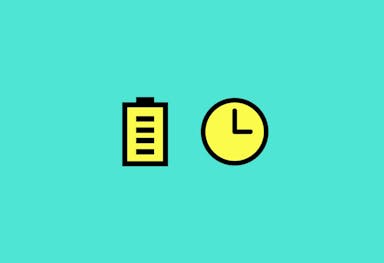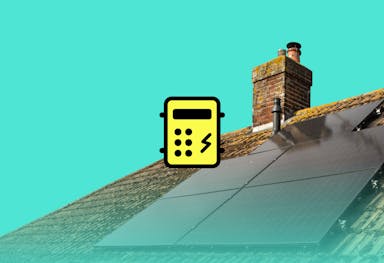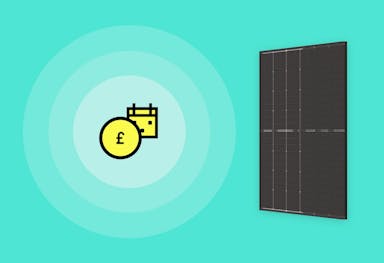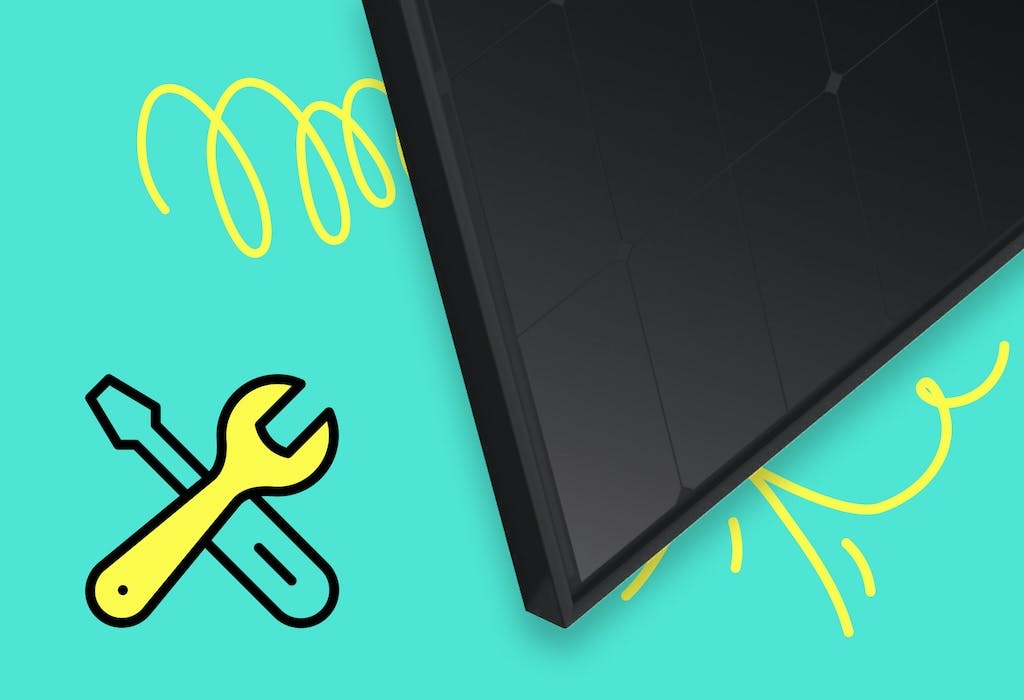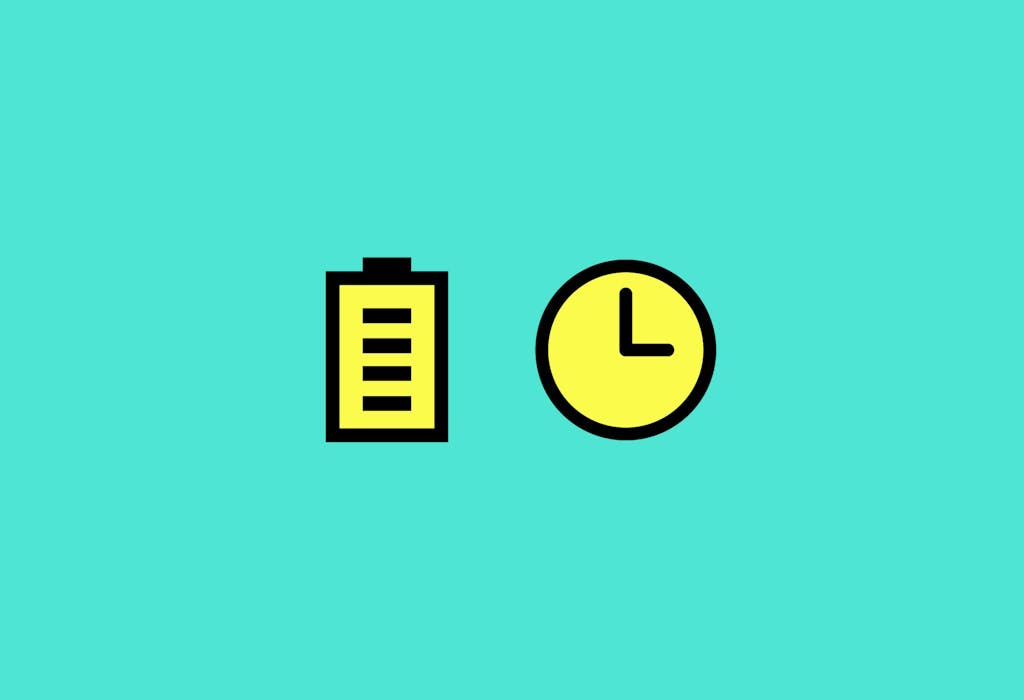- Solar advice hub
- Sunsave-plus
- The Sunsave Guarantee: explained
The Sunsave Guarantee: explained
Get a detailed breakdown of what the Sunsave Guarantee includes, from monitoring & maintenance to insurance.


Why you can trust our content
We know that the solar industry is full of misinformation, but we only use reliable sources, including:
- Our experienced solar experts, installers and system designers
- Our own database of solar & battery system designs
- Authoritative bodies like MCS and the UK government



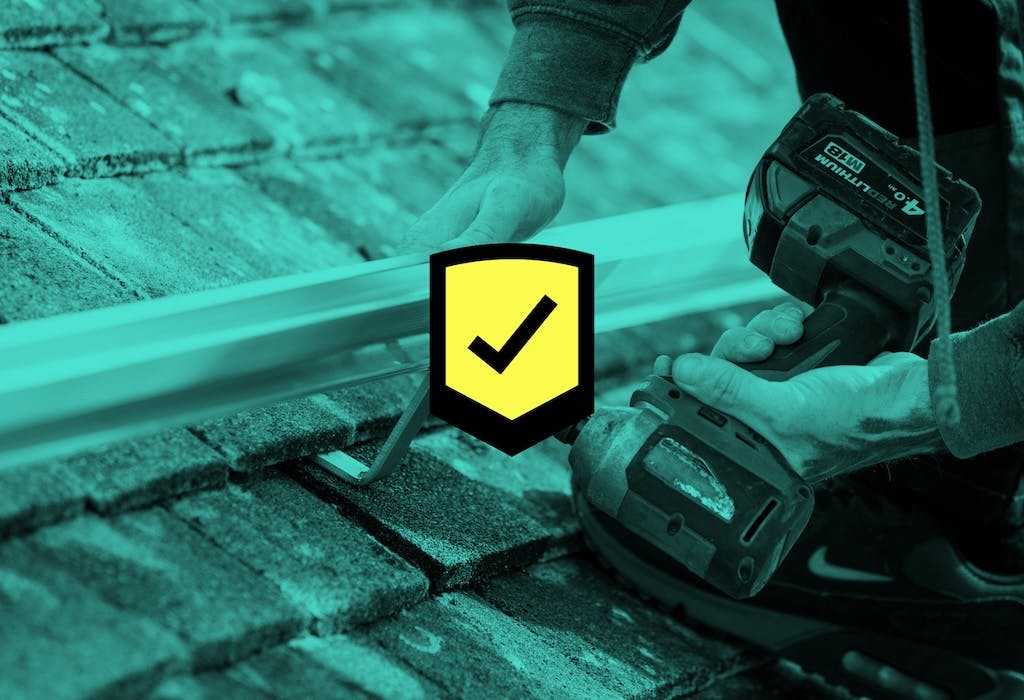
Calculate savings
What kind of home do you live in?
Calculate savings
What kind of home do you live in?
The Sunsave Guarantee: at a glance
As well as offering the UK’s very first solar subscription, Sunsave Plus, we also provide the first 20-year aftercare and support package: the Sunsave Guarantee.
Here’s everything you need to know about the Sunsave Guarantee, including what it covers, why it matters, and the headaches it could save you in the long term.
Find out how much you can save
What kind of home do you live in?
Why did we create the Sunsave Guarantee?
A solar & battery system is a big investment; it’s fair to expect it to work. That’s why we created the Sunsave Guarantee, to give UK households certainty they will get the best out of their system for their full subscription term.
Lack of monitoring & maintenance support
The energy crisis triggered a huge spike in demand for solar, and the number of solar panel installers in the UK has grown to a record high, totalling more than 4,200.
If someone in the UK wants solar, they have a staggering amount of choice when it comes to picking an installer.
However, despite the high number of businesses willing to put solar panels on people’s roofs, few of them offer any kind of maintenance, support, or aftercare.
This is a mismatch, given the high cost of a solar & battery system, and the importance of it lasting a long time.
Some technical experts in the industry estimate that a solar & battery system in the UK will need three maintenance call-outs across a 20-year period – one for the panels, one for the battery, and one for the inverter.
Modern systems are also much more complex and consequently require close monitoring - as we discuss below.
Rising popularity of batteries
Around 94% of new solar panel installations in the UK include a battery, according to data from Flexi-Orb and EPVS, and a battery usually needs replacing after about 10-12 years – well before the end of a solar panel system’s expected lifetime.
Unfortunately, finding an installer to replace your battery can be a lot of hassle – and it's certainly not cheap.
Peace of mind
A 2021 study by the Department for Business, Energy and Industrial Strategy (BEIS) found that 55% of people in the UK who don’t want (or aren’t sure about) solar panels reported maintenance concerns as a key reason, and 40% said that a guarantee scheme would allay these concerns.
The value of maintenance support isn't just being there when we're needed; it's also our customers knowing that we'll be there.
What is the Sunsave Guarantee?
The Sunsave Guarantee ensures that your solar & battery system will remain in superb condition throughout the 20-year subscription term of Sunsave Plus.
This means that once installed, you can rest assured that you’ll have a consistent supply of clean, green electricity.
All of our installations are performed to the highest standards using best-in-class kit, but the Sunsave Guarantee is there as a backup for total peace of mind.
If anything stops working or drops below an acceptable level of performance, we’ll be there to fix it.
Part of your fixed monthly fee for Sunsave Plus pays for the Sunsave Guarantee.
What’s included?
The Sunsave Guarantee includes:
- 30-year performance warranty on the solar panels
- Free battery upgrade – we’ll upgrade your battery as soon as it drops below 70% of its original capacity, which typically happens after 10-12 years
- A free inverter replacement if required
- 24/7 monitoring of the solar & battery system, including alerting you if something isn’t working
- Troubleshooting of any issues
- Management of any warranty claims
- Insurance – your system will be insured by Aviva against damage, fire, and theft
- Downtime protection – we’ll compensate you for any extended period of time that your system isn’t working as it should

There are four key parts to the Sunsave Guarantee:
1) 24/7 monitoring
2) maintenance
3) replacement parts
4) insurance & downtime protection.
Here’s a bit more detail on each of them:
1. 24/7 monitoring
System monitoring is a vital part of maximising your energy bill savings with solar.
Back in the early 2010s when UK homes first started switching to solar, systems were much simpler. You had your panels and inverter, and any excess energy went to the grid.
Today, systems are far more advanced. 94% of new solar installations in the UK now include a battery, and batteries are being used in increasingly complex ways.
The energy market is packed with smart export tariffs and time-of-use import tariffs, and the best way to benefit from these involves programming your battery to charge/discharge at specific times.
There are also new opportunities emerging regularly for homes to earn extra cash with their batteries via demand flexibility services and virtual power plants, adding to the complexity.
And whenever you switch import tariff or export tariff, or whenever you get a heat pump and/or electric car, your battery may need reprogramming.
Alongside the battery and the panels, you’ve also got the inverter, electricity meter, fuse box, cables and circuit breakers.
The additional complexity of modern solar and battery systems is certainly exciting, as it means there are more ways for UK homes to save. But there’s also a lot more that you need to keep your eye on.
However, you may not always have the time to do this, and it can be tricky to know the signs of an underperforming system unless you’re an expert.
That’s why we keep track of your panels, battery and inverter for you 24/7 using our remote monitoring platform. It automatically alerts us if anything’s wrong so that we can fix it as soon as possible.
Our monitoring tool in action
We’ve seen our monitoring tool catch issues that would have otherwise been noticed much later.
For instance, we sometimes detect that a system has stopped generating electricity, and so we notify the customer and suggest a few simple actions.
In most cases, the cause is a tripped switch on the solar fuseboard, which can sometimes occur due to small changes in local electrical conditions.
On a couple of occasions, we’ve spotted batteries that have stopped charging and/or gone flat.
After a quick investigation, we identified that both of these problems had been caused by missed firmware updates due to battery connectivity issues. Once we’d remotely triggered the firmware updates, the batteries were up and running again.
And when we told a customer that his energy bill was spiking wildly, he noticed that his electricity meter was misrecording nighttime usage as daytime usage, and so his energy supplier fixed the meter.
By catching and troubleshooting issues as soon as possible, we’re helping our customers avoid prolonged periods of system downtime and missed energy bill savings.

2. Maintenance
If we do spot a problem, we may need a bit of extra information, such as photos and documents. Most system issues can be solved remotely, and we'll always attempt to do this first.
If we’re not able to fix it remotely, a Sunsave engineer will visit your property within two weeks of us completing our remote troubleshooting process.
We would generally only need to send someone to site to carry out major electrical and roofing works, such as replacing a damaged panel or broken inverter.
This work would be very expensive if you were paying for it yourself – not to mention the replacement kit, which can cost thousands, and scaffolding (if necessary), which can add thousands more.
We do charge a call-out fee of £100, up to a maximum of £200 each year, plus VAT. That means even if you need multiple call-outs in one year, your costs will be capped.
This can be thought of a bit like an 'excess' on an insurance policy, as it's only a small fraction of the cost of this work – and we won't charge you anything for call-outs in the first two years that are found to be as a result of our workmanship.
3. Replacement parts
The Sunsave Guarantee is a promise that your system will keep working properly throughout the 20-year subscription period, which means that if something goes wrong, we’ll sort it – whether that means fixing the system, or completely replacing a part of it.
The process is a bit different depending on whether the underperforming part of your system is still within warranty.
If your panels, battery or inverter stop working before the end of their warranty, we’ll take care of submitting any claims to the manufacturer, and we’ll install any replacement hardware needed.
Once your battery is out of warranty and performing at less than 70% of its original capacity (usually after 10-12 years), we’ll upgrade it for free.
4. Insurance & downtime protection
Your Sunsave Plus system will be insured by Aviva against damage from theft, vandalism, natural catastrophe, and fire.
For instance, if there was a storm and some debris damaged your panels, you’d be fully covered.
Alongside the insurance, we also provide downtime cover – so if your system isn’t generating for any extended period of time, we’ll credit your monthly payments while we work to get it back to full health.
Who can get the Sunsave Guarantee?
Every Sunsave Plus subscription is covered by the Sunsave Guarantee, which lasts for the full 20-year term.
You can make a full early repayment without any penalties or fees, but doing so will mean you’re no longer protected by the Sunsave Guarantee. To learn more about flexible payments with Sunsave Plus, click here.
And if you’re wondering how much a solar & battery system could save you, just answer a few questions below and we'll provide you with an estimate.
Find out how much you can save
What kind of home do you live in?
The Sunsave Guarantee vs standard warranties
The workmanship and product warranties you’ll receive with a standard solar installation are insufficient when it comes to protecting your system over the long term.
As you can see below, the Sunsave Guarantee covers your entire system for 20 years, and includes remote monitoring, insurance, and downtime cover – which standard warranties don’t.
You will also get free replacement parts with the Sunsave Guarantee, even if your battery or inverter aren’t under warranty.
| Workmanship warranty | Manufacturer’s warranty | Sunsave Guarantee | |
|---|---|---|---|
| Term length | 2-5 years | Panels: typically 20 years Battery: typically 10 years |
20 years |
| Replacement parts (e.g. battery & inverter) | No | Yes if under warranty, but doesn’t cover labour or scaffolding | Yes, including if parts are no longer under warranty |
| Labour & scaffolding | Yes, for workmanship issues only | No | Yes |
| Remote monitoring | No | No | Yes, 24/7 |
| Insurance | No | No | Yes, damage, fire and theft |
| Downtime cover | No | No | Yes |
How often does a solar & battery system need maintenance?
As mentioned previously, some technical experts in the industry estimate that a solar & battery system in the UK will require three maintenance call-outs across a 20-year period – one for the panels, one for the battery, and one for the inverter.
Here’s a bit more detail about each component.
Solar panel maintenance
Solar panels are sturdy objects with no moving parts, which means in an ideal world you can have them installed and never think about them again (known as ‘fit and forget’).
However, as with any complex equipment, problems can still happen.
In a survey of solar panel owners conducted by Which? in October 2022, people reported several issues with their systems.
These included electrical difficulties, generation meters breaking, panels producing less or no electricity, weak electrical connections, cracked/broken glass on panels, and isolator issues.
Some of the things that can cause a solar panel system to malfunction include:
- Improper installation – dodgy connections will lead to problems further down the line
- Low quality hardware – if the kit isn’t up to scratch, it can deteriorate pretty quickly
- Birds – they can nest under solar panels and damage wiring
- Falling branches and other debris – this can cause small cracks in the glass that eventually lead to mechanical failures
- Sea air – the salt blown onto solar panels by the sea can slowly degrade the hardware
- Shading – when parts of solar panels are shaded for a long period of time, it can create ‘hot spots’ which reduce output
With Sunsave’s top-quality kit and professional installation, solar panel issues are unlikely, but sometimes things do go wrong – and the Sunsave Guarantee is there for total peace of mind.
Battery maintenance
Solar batteries are significantly less sturdy than solar panels, and consequently have a much shorter lifespan.
Whenever you charge and then discharge a solar battery, this is referred to as a ‘cycle’, and a battery can only take so many cycles. That’s why most solar battery warranties are expressed in two different ways: cycles, and years.
Batteries help you save money and are there to be used, so there’s no point avoiding the cycles. You just need to take other sensible measures to ensure your battery performs well for as long as possible, such as keeping the area around it ventilated and cool.
Your solar battery’s capacity will have substantially declined after 10 to 12 years, to the extent that it’ll need replacing if you’re going to continue getting the best out of your system.
Once your battery is operating at less than 70% of its original capacity, this will be automatically flagged by our monitoring platform and we’ll provide a free upgrade.
To learn more, check out our guide to solar battery lifespan.
Inverter maintenance
In the same Which? survey, the most common issue reported by solar panel owners was a malfunctioning inverter, with more than 10% reporting this as an issue.
Similarly, a study in 2019 by risk management experts Det Norske Veritas (DNV) found that one half of inverters fail by year 14, as shown in the chart below.
Any solar system depends completely on the health of the inverter, as this is the machine that ensures all the electricity is actually usable (and can be exported to the grid).
However, if your inverter is not working and is preventing your solar panels from achieving at least 80% of their original output capacity, we’ll install a new one for free.
What’s not included?
The Sunsave Guarantee does not include replacement bird protection or solar panel cleaning services.
If you opt to have bird protection added to your Sunsave Plus system at the point of install, this should last the system’s lifetime – and any damage that birds cause to your solar panels is covered by the insurance policy.
And in the case of solar panel cleaning, this is rarely required because panels are ‘self-cleaning’ – particularly in the UK.
That’s because they’re treated with a special hydrophobic coating, which means water droplets just roll straight off them. Once solar panels are installed at an angle, any rainfall just runs down the solar panels and cleans them in the process.
They still benefit from a clean every two to three years in the UK, which you can do from ground level with an extendable brush.
Alternatively, it shouldn’t cost more than around £100 to have someone come over and clean your solar panel system, and many window cleaners offer this service.
If your solar panels are on your roof you should be careful about doing the cleaning yourself. Unless you have an extendable, soft brush that you can use whilst standing on the ground, it is recommended that you get a professional to clean your solar panels.
Next steps
Having a solar & battery system should be a stress-free experience, and that’s exactly what the Sunsave Guarantee has been designed to provide.
With Sunsave Plus, you can switch to solar and enjoy a reliable source of clean, green electricity for the next 20 years.
If you’re interested in Sunsave Plus, check out this page for more information, or enter a few quick details below to sign up.
Find out how much you can save
What kind of home do you live in?
The Sunsave Guarantee: FAQs
Related articles

Written byCharlie Clissitt
Born in Yorkshire and now living in London, Charlie has been in the renewable energy industry since 2017, having worked as a writer and then editor of green technology advisor The Eco Experts. His work has focussed on educating UK homeowners about a wide range of residential power and heating solutions, including solar panels, storage batteries, heat pumps, infrared panels, and EV chargers.
